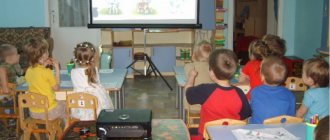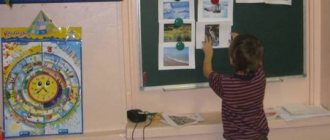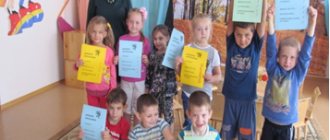Literature
- In different age groups you will find manuals on speech development: for the 2nd junior group of kindergarten; a program of open events for middle school children; open events for preschoolers of the senior group; activities for the preparatory group.
- You will read about experimentation, observations of nature, the properties of substances, caring for animals, and plants in the manual on cognitive development.
- The artistic development of children will be helped by a guide to open events for older children.
- Teachers, organizers, and heads of educational organizations will be interested in familiarizing themselves with the manual on holding promotional events, event announcements, and presentations to children and their parents.
Structure of a combined lesson
The lesson plan is quite clear and includes three components.
First, the independent activities of schoolchildren are monitored. This stage involves checking homework and determining lesson objectives together with the children.
You may be interested in: Biography of Lermontov: chronological table, spiritual heritage, translations
The main part of the lesson is the explanation of new material, consolidation of acquired skills and abilities.
The third element of the lesson is summing up, analyzing the new homework. Together with the students, the teacher conducts reflection and notes the students’ successes.
The English lesson plan involves not only a theoretical part, but also the development of oral speech as part of practical work (dialogue).
Open lessons: types
Open classes are held for certification and advanced training of preschool teachers. Teachers conduct open final classes at the beginning and end of the year. In kindergartens, such classes are conducted in many disciplines; let’s get acquainted with each of them separately.
FEMP discipline
Topic: Excellent train excursion.
The purpose of the lesson:
- Improving the skills of comparing objects by width.
- Labeling comparison results with appropriate words.
- Exercises in knowledge of mathematics: on geometric figures, the ability to find them.
- Development of thinking, seeing patterns in subject arrangements.
- Cultivating interest in mathematics.
- Nurturing children's independence.
Didactic material:
- Red, green yellow, blue butterflies.
- Paper flowers of the same colors.
- Wide and narrow streams of paper.
- Tickets of different colors with the image of a square, triangle, circle.
- Jars of water, red, green, blue paints, brushes, a plate of candies.
Summary of the lesson:
The guys are standing around. The teacher invites them to hold hands and smile at each other. She says that today they will go on a magical journey and asks them what they would like to travel on. You offer to guess a riddle (about a train). They guess that it is a train and in order to get tickets, they take their places where geometric shapes of different colors are depicted. Next, the teacher conducts the lesson and analyzes the game.
Open speech therapy lesson on fairy tales for the Federal State Educational Standards
Topic: Visit the land of fairy tales.
The purpose of the lesson:
- Development of mobility of the organs of articulation, improvement of fine motor skills of the hands, activation of facial muscles, training in types of sound and syllable analysis.
- Development of correct pronunciation of sounds in speech in children; development of phoneme representations.
- Fostering kindness, caring for each other, and the desire to help each other.
Didactic material:
Toys: Winnie the Pooh, Piglet, a picture of a donkey and Tigger, a video about Tigger, dishes, peas, beans, and the song “Who comes to visit in the morning?”
Summary of the lesson:
The boys are sitting on the carpets. The speech therapist greets them and asks if they like to visit? A song sounds and Winnie the Pooh comes in. And together with the speech therapist, the children go to Winnie the Pooh. Then the teacher continues the game.
Physical education discipline
Topic: We are healthy athletes.
The purpose of the lesson:
- Preserving and strengthening the health of children.
- Consolidating different types of running and walking, learning to walk on a bench, as well as maintaining balance.
- Cultivating dexterity.
- Practicing jumping over different objects.
- Forming a sense of kindness in children.
Didactic material:
- Decorating a forest clearing: stumps, logs, bushes, bridges.
- House of Doctor Aibolit.
- Toy - sparrow.
- Fox costume, firefly hat, flashlight (toy).
Summary of the lesson:
The guys, entering the hall, stand in a line. Then the fox comes running and brings a telegram saying that the sparrow was bitten by a snake. The teacher invites the children to find a sparrow and take it to Aibolit. At the same time, he tells the guys that they need to overcome a long and difficult road, and for this they need to engage in physical education. And the teacher begins to engage in physical education with the children.
Lesson forms
The objectives of the lesson may be different. Therefore, in a modern school, teachers conduct various types of lessons:
- Learning new material.
- Assimilation and development of knowledge, skills and abilities (abbreviated ZUN).
- Systematization and generalization of knowledge.
- Practical use of ZUN.
- Control and correction of abilities, knowledge, skills.
You may be interested in: Different forms of the verb talk: features of use
The lesson plan depends on its form:
- thematic;
- combined.
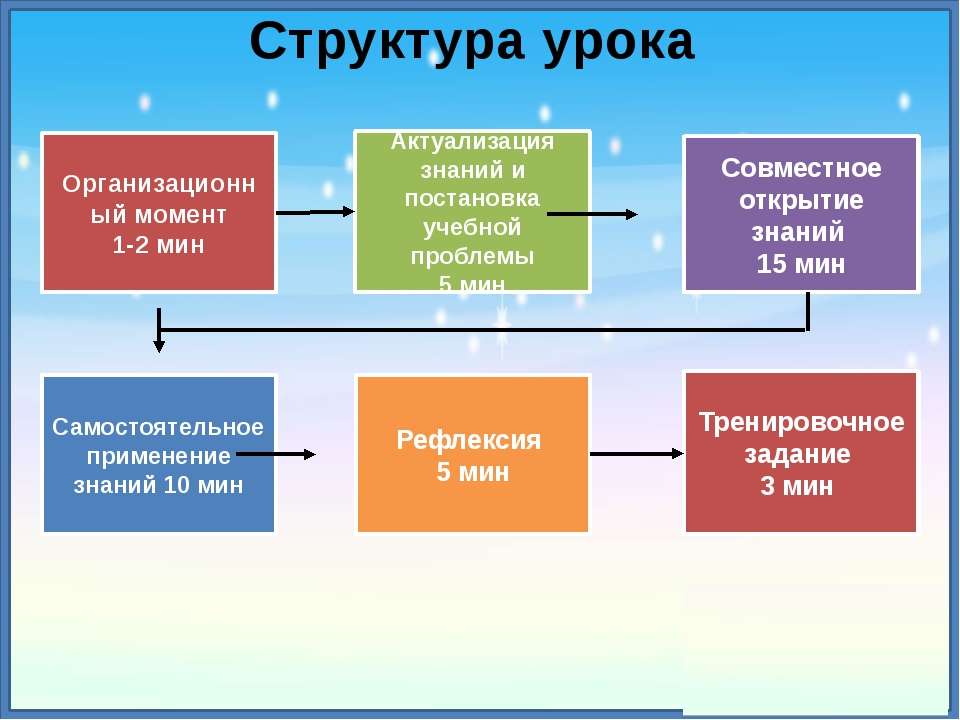
Useful tips
When drawing up a plan for a physical education lesson, the teacher determines its place in educational activities and evaluates its connection with other classes. He identifies the purpose and main content of the lesson, selects the forms and methods of its implementation. When planning homework, the teacher also takes into account the physiological characteristics of schoolchildren.
Of primary importance when planning a training session is a preliminary analysis of the results of previously taught lessons.
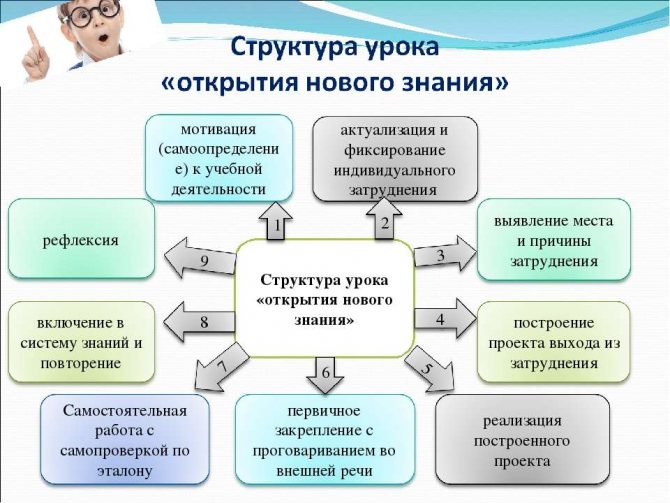
Components of the plan
Any lesson plan consists of the following sections:
- The header of the summary, which contains basic information about the lesson, its type and type, goals, objectives.
- The course of the lesson is the main part of the outline, in which each action of the teacher is written out step by step, starting from the organizational moment and ending with summing up or reflection.
- Homework. It may be absent if this was a control lesson.
Next we will look at each of these points in more detail.
Homework
Homework is written down at the end of the notes. Often it involves working with a textbook and doing certain exercises.
If you already have a lesson plan for the next lesson, you can have students process the material you have prepared for study and then share it with their classmates.
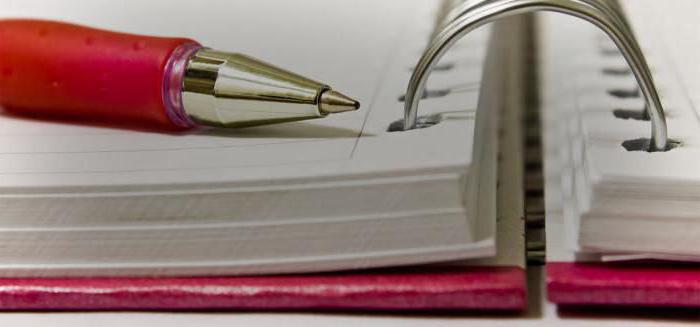
Alternatively, the teacher can offer differentiated homework for the students to choose from. For example, do exercises from the textbook or create a project on the topic - reference tables, tests, wall newspapers, select exercises for consolidation. Naturally, creative tasks are assessed separately. Students who claim high grades can complete them.
Open lesson summary
An open lesson plan is not much different from a regular note. The main difference is a more careful selection of material, methods and techniques for its implementation.
It is desirable that an open lesson have its own epigraph, visual materials, and that innovative teaching methods and techniques are used when working with students. Tasks and material for the lesson should also be carefully selected and analyzed for compliance with existing educational norms and standards. It is important to calculate as accurately as possible the time required to complete all planned work so that students have time to do everything, but the lesson should not end early.
Important little things
- If you have chosen the traditional form of a lesson, you should not neglect small effective moves, a highlight that will make your lesson memorable. Some teachers look for interesting aphorisms or parables that smoothly lead the conversation to the topic of the lesson. Remember about visual aids, but it is important not to overdo it in this matter - in this case, students will remember them, and the information you provide will fall on deaf ears.
- It would be a good idea to prepare a booklet in advance for presenting your lesson to the assessors. Firstly, it will be more convenient for them to monitor the progress of your work, and, secondly, this simple trick allows you to win over the commission by showing your respect for their work.
- To conduct an open lesson perfectly, you need the right attitude – yours and the class’s. The commission expects to see a teacher who is calm, confident in himself and his students. Your task is to conduct the lesson as if there were no committee in the room at all. Explain to children that the assessors are not in the classroom to evaluate their knowledge and their presence will not affect their performance in any way.
- Refrain from rehearsing with a class that is planning an open lesson. An experienced eye will always distinguish a rehearsed lesson from the unnatural behavior of children and the teacher. In addition to the negative opinion of the commission about your work, such attempts entail a loss of teacher authority among students. Don't try "too hard." The inspectors will leave, and the children will respect you much less for this suspicious and unnatural zeal.
- Before the end of the lesson, you should sum up, summarize the work of the class, and discuss future plans.
- After the lesson, you will be required to self-reflect on the lesson. It is advisable to prepare it in advance - approximate, of course. This will help you not to be lost in words, to know what you need to start from when evaluating your work.
How to prepare and conduct an open lesson; methodological development on the topic
Guidelines
“How to prepare and conduct an open lesson”
Prepared by methodologist – Kapustyanskaya L.V.
Explanatory note
One of the important forms of organizing methodological work is open classes. An open lesson, unlike a regular one, is a specially prepared form of organizing methodological work; at the same time, a real “educational” process takes place in such a lesson. Non-standard, non-traditional activities are of particular importance.
In an open lesson, the teacher shows and demonstrates to colleagues his positive or innovative experience, the implementation of a methodological idea, the use of a methodological technique, a teaching method. An open lesson has a methodological goal that reflects what the teacher wants to show to those attending.
Methodological recommendations “How to prepare and conduct an open lesson” are intended for kindergarten teachers.
The purpose of these methodological recommendations is to provide methodological assistance to teachers in solving pedagogical problems to improve the educational process in preparing and conducting open classes.
The main objectives of these methodological recommendations:
contribute to increasing the effectiveness of professional self-education of educators and teachers, in preparation for conducting open classes, improving the quality of classes, as well as providing methodological assistance in analyzing classes and disseminating teaching experience.
- Open classes are one of the important forms of organizing methodological work.
In an open lesson, the teacher demonstrates to colleagues his positive or innovative experience, the implementation of a methodological idea, the use of a methodological technique or teaching method.
Any type of activity can be used for an open lesson. It is recommended to limit the time of an open lesson to a time frame depending on the number of children in the group. During this time, it is possible to demonstrate not only the structural elements of the lesson, but also the pedagogical findings of the teacher.
Preparing for open events is not fundamentally different from preparing for regular events. However, the need to achieve the methodological goal of an open lesson leaves an imprint on its structure, composition and combination of methodological techniques and teaching aids. The teacher presenting an open lesson must ensure that the methodological goal is achieved. And self-analysis of the lesson is carried out in two aspects: from the point of view of achieving the methodological goal and from the point of view of students mastering the material.
So, it should be understood that an open lesson, unlike a regular one, has a methodological goal, which reflects what the teacher wants to show to those attending.
For whom and why are open classes held:
1. For members of the methodological association.
2. For colleagues at the Children's Orphanage.
Here it is possible to demonstrate a classic lesson as part of the training of young specialists or to exchange experience in the field of application of new pedagogical technologies.
3. Open lesson to demonstrate the capabilities of mastering innovative activities.
4. Open lesson in the presence of an expert for the purpose of certification for a higher qualification category.
5. Open lesson for the competition.
- Recommendations for preparing and conducting open classes.
There are a number of requirements:
Open classes are conducted by teachers with a high level of scientific, methodological and professional training. The occupation of a teacher working in the old way cannot be a source of innovative experience.
An open lesson must be novel. Novelty may relate to content or methods. But in any case, an open lesson should contain something new for those attending.
An open lesson reflects the solution to a methodological problem that the teacher is working on.
An open lesson should show (prove) the advantages (high efficiency) of the innovation. Therefore, the teacher presenting an open lesson chooses a topic whose content allows this to be done.
When conducting an open lesson, all requirements for the educational process are met. The lesson should be conducted under normal conditions, with a generally accepted duration, etc.
Open activities should not harm children. Pupils should receive as much knowledge as they would have learned without attending.
Workplaces will be prepared for those visiting.
The number of visitors to open classes cannot be unlimited. Let us note that the attendance of a lesson by at least one stranger creates discomfort for both the teacher and the students, and therefore, it is now widely practiced to study the experience of teachers using video recordings of lessons.
Open classes and their content should not contradict the plans.
It is not permissible to “rehearse” an open lesson with the same group. This requirement is violated everywhere: teachers prepare for the lesson in advance, “play” it, etc., calling all this preparation for an open lesson.
- Planning an open lesson.
At the end of the school year, at a meeting of the Ministry of Education, an analysis of mutual visits to classes by teachers is carried out, and interesting experiences are identified that have proven themselves in practice. A plan for conducting open classes is drawn up, the level at which classes will be held is determined: within the Moscow Region, Children's Orphanage, etc.
Planning an open lesson is carried out in accordance with generally accepted requirements. Structurally, open classes are no different from regular classes. An open lesson has a methodological goal, the achievement of which is subject to the content of the material and the form of organization of cognitive, practical-research, interactive, etc. activities of children.
To determine the main didactic goal of a lesson means to establish what it will mainly be devoted to: learning new material, consolidating, repeating, systematizing the material.
Based on the main didactic purpose of the lesson, the following types of lessons can be specified:
- learning new things
- consolidation
- generalization
- combined lesson
Based on the general idea of modern scientific ideas about the lesson, its substantive goal is triune in nature and consists of three interrelated aspects: cognitive, developmental and educational, which are reflected in the goal and content of the material.
Each of the named types of classes, depending on the nature of the teacher’s activity and the sources of knowledge used, is divided into classes of various types. In this case, the type of lesson is determined by the main method of organizing the interrelated activities of the teacher and students and the source of knowledge predominant in this lesson.
| Type of activity | Type of activity | Target |
| learning new things | lecture, excursion, research work, practical lesson... | Studying and primary consolidation of new knowledge. |
| consolidation of knowledge | practical lesson, excursion... | The goal is to develop skills in applying knowledge. |
| generalization | practical lesson… | The goal is to generalize individual knowledge into a system. |
- The main stages of preparing and conducting an open lesson.
- The teacher chooses the topic of an open lesson independently, taking into account the analysis of the material, on which he can better demonstrate the improvements, techniques and methods he has developed, and the organization of students’ activities at different stages of the lesson.
- It is necessary to begin preparation by formulating the methodological goal of the open lesson. The methodological goal reflects the main methodology for conducting the lesson. This will help to approach self-analysis and analysis of the lesson in the most constructive and objective manner, to evaluate the correctness of the selected methods and techniques and forms of organization.
- The methodological goal of an open lesson can be formulated as follows:
— methods of using a personal computer in solving practical problems;
— methods of organizing students’ independent work;
— activation of cognitive activity of students in the classroom while working with visual aids and didactic material.
— methodology for using ——— in the process of presenting new material.
- When preparing for an open lesson, the teacher must use modern information, select materials from pedagogical and methodological literature, apply the results of visiting methodological seminars, exhibitions, etc. All this will help make the lesson interesting and informative.
- The material and technical equipment of the lesson must be prepared in advance. The equipment and TCO should be tested in action. Consider the sequence of their use in class.
- Visual aids and audiovisual aids must be selected so that their use gives the optimal effect to achieve the goals. Too many visual aids distract children’s attention, and an abundance of unused visual aids is unjustified in the classroom. Be modest and do not burden the activity with visuals as decoration. All illustrative materials of the lesson should work towards the goal of the lesson.
Drawing up a lesson plan.
The classic lesson plan consists of 3 parts: Introductory, Main and Final:
The introductory (or introductory) part is necessary to gain the attention of children.
From the very beginning of the lesson, you need to surprise, interest, delight, that is, motivate them for the upcoming work.
In Main Part II of the lesson, the topic is revealed and reinforced. The most complex activities are concentrated here. Pedagogical technologies, forms and methods of work selected by the teacher that allow solving the assigned tasks are shown.
Part III Final Serves as a generalization of the previous process. Words of gratitude to the students are heard. At the same time, the work in the lesson is analyzed.
- Determining the goals of an open lesson.
Formulating the goal of an open lesson is a very important moment, “As you name the ship, so it will sail...”
The GOAL of a lesson is a result pre-programmed by the teacher, which must be achieved by the teacher and children at the end of this lesson (the “Here and Now” principle). To formulate correctly, you need to go through 2 steps.
Step 1:
It is necessary to begin preparation by formulating the methodological goal of the open lesson. The methodological goal reflects the main methodology of the lesson. This will help to approach self-analysis and analysis of the lesson in the most constructive and objective manner, to evaluate the correctness of the selected methods and techniques and forms of organization.
The methodological goal of an open lesson can be formulated as follows:
— methods of using a personal computer in solving practical problems;
— methodology for organizing students’ independent work
— activation of cognitive activity in the classroom while working with visual aids and didactic material.
In accordance with the methodological purpose of the lesson, the teacher selects such educational material that will allow the most complete disclosure of those methods, techniques and means that form the basis of pedagogical skills and the technology with which the teacher works.
Step 2 – formulation of the triune goal of the lesson (training, development, education).
The purpose of training involves the formation of competencies, practical experience, knowledge systems, etc. in students. It must be specified in relation to this topic of the lesson.
Statement of purpose
Approximate formulations of level 1 goals:
1. Introduce students to “OOOO”. 2. Give the concept of “OOOO”. Level 2 is the level of knowledge. An example of setting a goal for this level:
1. Learn “OOOOOO”: 2. Repeat “OOOOOO”;
When formulating the goal of the 2nd level of assimilation, you can use the following verbs: “sketch”, “teach”, “consolidate”, “provide”, formulate”, “control”, “prepare”, “report”, etc.
Level 3 - the level of skills and abilities, these are the actions that students perform mainly in practical classes.
For example:
1. Contribute to the mastery of “OOOO”: 2. Strive to develop the skill of working with “OOOO”: 3. Contribute to the development of the “OOOO” skill.
4. Systematize knowledge on the topic “OOOO”.
Here you can use verbs such as: “generalize”, “apply knowledge”, “do”.
Tasks
development involves the development in the classroom of students’ cognitive mental processes, personal qualities (will, independence, etc.)
- Development of thinking - (analytical) development of the ability to identify essential features and properties, (synthesizing) development of the ability to establish common, general features and properties of the whole, (analytical-synthesizing) development of the ability to classify, make generalizing conclusions, (abstract) development of the ability to identify general and essential signs, distinguish unimportant signs and be distracted from them, development of skills to apply knowledge in practice.
- Development of skills (development of the ability to use a non-standard, creative approach to solving a wide variety of problems, development of operational and control skills - the ability to use devices and tools, plan, evaluate the results of actions performed, regulate and control one’s actions).
- Development of will and independence (development of self-confidence, perseverance, the ability to overcome difficulties, achieve the intended goal, the ability to act independently).
Educational education involves the formation of certain personality and character traits in students.
At each lesson, the teacher should strive to cultivate the best qualities, therefore, educational goals should be set before each lesson.
Examples of formulations of educational objectives:
- strive to cultivate feelings, collectivism, respect for elders, mutual assistance, responsiveness, the desire for physical health; - strive to cultivate a sense of responsibility for the assigned work, diligence, accuracy, and conscientiousness; - strive to cultivate a sense of pride in—-, the ability to manage emotions.
For an open lesson, it is necessary to draw up a lesson plan - with a clear and reasonable distribution of lesson time and an indication of what and how the teacher and children do (it is recommended to make several copies for those invited). The plan should reflect all the main stages of the lesson, the main types of activities of the teacher and children, types and forms of organizing work, types of exercises. Subsequently, the lesson plan should become the basis for self-reflection and analysis of the lesson.
- Preparation of open lesson materials.
For an open lesson, the teacher prepares a full set of documents defining the methodological support of the lesson, which includes the following documents:
— calendar and thematic plan; — lesson plan; — didactic, handouts;
— a set of video materials for TSO;
The methodological development of an open lesson is drawn up.
The structure of the methodological development of an open lesson should contain
- explanatory note,
- lesson structure,
- detailed outline (scenario) of the lesson,
- samples of didactic material,
- list of references used, etc.
The explanatory note must outline the meaning and role of the lesson, pedagogical goals, tasks facing the teacher, and the expected result. Particular attention in the explanatory note should be given to the pedagogical technology or methodology in which the lesson is conducted.
Content requirements
methodological development
- The content of the methodological development must clearly correspond to the topic and purpose.
- The content of methodological development should be such that teachers can obtain information about the most rational organization of the process, the effectiveness of methods and teaching techniques, forms of presentation of material, and the use of modern technical teaching aids.
- The material should be systematized and presented as simply and clearly as possible.
- The language of methodological development should be clear, concise, competent, and convincing.
- Must contain specific materials that the teacher used in his work (instructions, cards, diagrams, etc.).
General requirements for the design of methodological development
- Methodological development font Times New Roman, font size – 14, spacing 1.5.
- The volume of applications is not limited, but they must correspond to the text (links to them in the text are required).
- The list of used sources should be in alphabetical order by the full name of the authors and contain the necessary bibliographic data.
- The number and volume of sections of methodological development is not limited.
The methodological development can be supplemented and partially reworked after an open lesson, so that everything valuable that is obtained during the lesson is reflected in it and can be used by other teachers.
The content and design of the methodological development must comply with the requirements of these recommendations.
The prepared and formalized methodological development of an open lesson, after consideration at a meeting of the Moscow Region and approval, is submitted to the methodological office.
- Analysis of an open lesson.
Analysis of an open lesson with the participation of those who attended is mandatory.
First, the floor is given to the teacher - the author of the lesson. It resembles a methodological goal and describes the work to achieve it. His speech should contain answers to the questions: whether the methodological goal of the open lesson has been achieved, whether the objectives of the educational process have been fulfilled.
It is important to reflect:
- the degree of achievement of the set objectives;
- reasons and justification for the need to deviate from the lesson plan;
- nuances that those present might not have seen, noticed, or appreciated;
- outline prospects for further study of the material.
Visitors also evaluate the lesson from the point of view of achieving the methodological goal. Unlike the analysis of classes attended for the purpose of control, the most important thing here is the exchange of opinions, discussions, disputes, etc.
The teacher’s answers should be explanatory, developmental, informational and educational in nature.
Brief analytical and evaluative judgments of those present are expected.
Not only complimentary statements are valuable, but also suggestions, identification of unused opportunities, etc.
The teacher can prepare questionnaires for subsequent generalization and analysis of the lesson.
BIBLIOGRAPHY
Potashnik M.M., Levit M.V. How to prepare and conduct an open lesson (modern technology) - M.: Pedagogical Society of Russia, 2008
Potashnik M.M. Requirements for a modern lesson - M.: Center for Pedagogical Education, 2008
Reshetnikov P. E. Non-traditional technological system of teacher training. The Birth of a Master: book. for higher education teachers and Wednesday ped. textbook institutions / P. E. Reshetnikov. - M.: VLADOS, 2000. - 301 p. : ill. — (Pedagogical workshop).
Salnikova T.P. Pedagogical technologies: Textbook / M.: TC Sfera, 2005.
Samigullin G.Kh. K.biol. n. Associate Professor, Rector of the Institute of Continuing Pedagogical Education. Pedagogical requirements for open lessons // Methodist No. 6 2007.
Tips for writing
We bring to your attention some practical tips for taking notes.
- Drawing up a lesson plan always begins with the formulation of the topic, goals and objectives.
- Be sure to identify the main concepts and definitions that you will rely on during the lesson. It is useful to compile for yourself a mini-dictionary of terms and concepts used when studying the topic.
- Determine which part of the educational material you will teach in this lesson, and which part you will cover in the following classes.
- Determine the type (learning new material, consolidation, combined lesson) and type of lesson (lecture, film lesson, practical or laboratory work).
- Select material and literature on the topic, educational materials and equipment, visual aids.
- Come up with a “highlight”: an epigraph, an interesting fact, an experience.
- Consider how you will test your knowledge at the end of the lesson - through a conversation or tests.
- Consider the amount of homework and select appropriate materials.
- Be sure to prepare cards on the topic. If the class quickly copes with the tasks you set, you can always give an additional task.
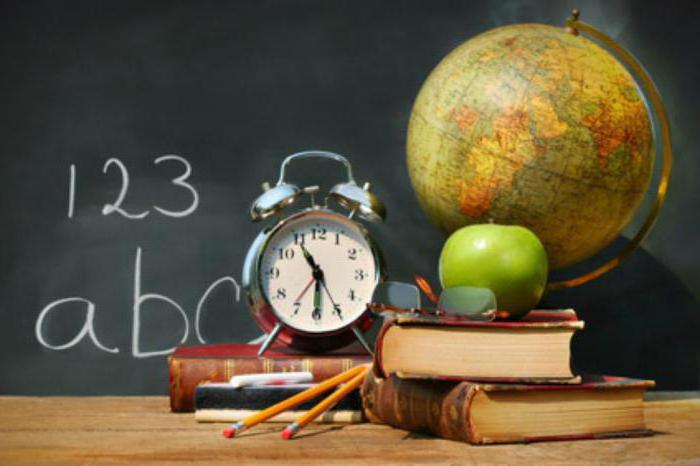
- After drawing up the plan, be sure to review it, sign in pencil, approximately how much time will be needed for each stage. If you feel like there are too many tasks, identify those that you can throw away. If there are few tasks, select additional ones.
- After completing it, be sure to analyze your notes, note which tasks went “with a bang” and which ones turned out to be superfluous. Take the results into account when preparing your next summary. Especially if you are going to present an open lesson plan on this topic.
Teaching methods
The teacher includes certain teaching methods in the history lesson plan:
- show-demonstration;
- verbal explanation;
- design and research work;
- problem approach;
- ICT (information and communication technologies).
Perhaps the most accessible, effective, and widespread teaching tool is the word. It activates the feelings and imagination of schoolchildren, develops their thinking. Speech should be emotional, lively, bright, it is possible to use associations, metaphors, comparisons.
Visualization methods are also included in the lesson plan. For example, for chemistry, laboratory equipment serves as a means of visualization.
In a music lesson, clarity is manifested in the demonstration of “live sound”. It is effective only when it is not reduced to the usual demonstration of the teacher’s performing arts and is aimed at achieving certain goals.
As part of a music lesson, the teacher demonstrates a standard performance to schoolchildren. Practical work is considered as the main teaching method in chemistry, biology, and physics classes.
In lesson plans at school, teachers include the main goals and objectives that must be solved.
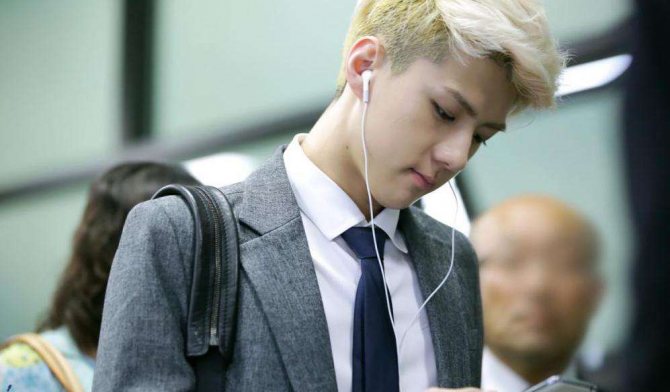
Abstract header
A lesson plan always starts with a cap. It states:
- Lesson topic. Often it is written down in the teacher’s lesson plan.
- Target. Each lesson has its own triune goal. It includes: training (for example, to give an idea of the subject, summarize and systematize knowledge, practice skills); development (develop memory, thinking, communication skills, ability to work independently); education (to foster or instill a sense of patriotism, hard work, discipline, etc.).

- Tasks that state the minimum knowledge and skills that students must acquire during the lesson. They are required to meet the knowledge requirements that the Ministry of Education sets for students.
- Lesson type.
- Methods and techniques used in the lesson: exercise method, lecture, conversation, microphone, dictation and others.
- Equipment used in the lesson: video and audio materials, pictures, presentations, cards.
- Literature. It is also advisable to indicate the sources that were used in compiling the lesson - articles, textbooks.


